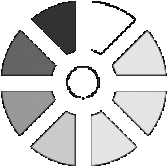K-12 Education System of Serbia
The Ministry of Education of the Republic of Serbia regulates the K-12 education system in Serbia. The K-12 educational levels are-preschool, primary and secondary education.
Serbian K-12 Educational Levels
Preschool Education
Preschool education in Serbia is imparted by preschool institutions and kindergartens. Preschool education in Serbia is compulsory for children aged 5.5 to 6.5 years. It is referred to as the preparatory programme for primary school in Serbia. This programme is of 4 hours everyday for about 9 months. Most of the preschools in Serbia are public. The preparatory programme in Serbia public kindergarten is free of charge. If in a region, there is no kindergarten, then the preparatory preschool programme is organized in primary schools.
Preschools in Serbia provide educational environment and prepares students for primary school.
- Age: 6 months to 6.5 years
Preschool institutions: Preschool institution offer day nursery, social services and medical care along with educational activities. There are 150 state and 57 private preschool institutions in Serbia
Children with Disabilities
Children with disabilities are offered preschool education. There are regular as well as special educational groups for these children.
Primary Education
Primary education in Serbia is compulsory and free in state schools. Private primary schools in Serbia do charge fees. Primary schools in Serbia provide general education, and work towards the development of the child intellectually, physically, socially and personally.
- Duration: 9 years
- Grades: 1 to 8
- Ages: 7 to 15
Primary education in Serbia is divided into two grade levels
Lower grades: Includes grade 1 to 4. All the subjects at this level are taught by a single teacher. Though some of the subjects, such as foreign languages and arts are taught by different subject teachers.
Curriculum: Serbian language, art, nature and society, physical education, mathematics and music.
Higher grades: Includes grades 5 to 8. There are different teachers for different subjects.
Curriculum: Serbian language, mathematics, physics, foreign language, history, music, physical education, biology, art, geography, chemistry, mother tongue/other language and technical education.
Compulsory elective subjects: Religious education, languages and civics.
Certificate awarded: At the end of primary education, students must sit for final exams. Students who pass the exam are awarded a primary education completion certificate.
Primary Music Education and Primary Ballet Education
In Serbia, there is music and ballet education at the primary level. These primary schools are not mandatory to attend. The primary music and primary ballet schools are free of charge and funded by the local and central levels.
Primary music education lasts for 2 to 6 years; and primary ballet education lasts for 4 years.
Primary Adult education
Primary adult education is for students aged 15 and above. There are about 14 primary adult education schools in Serbia.
In Serbia, regular primary schools also organize primary adult education programmes.
Admission Procedure
Children can take admittance into the primary schools in Serbia on the basis of geographical location. Parents or guardian of the children must file a request of the selected schools by February 1. Following document must be submitted with the request:
- Birth certificate
- Preparatory preschool programme certificate of attendance
- Evidence of medical examination of the child
- Residence proof of parents
Enrollment period: April to May
Admission in primary ballet or primary music school: Students who wish to enter grade 1 of the primary music or ballet school must pass an entrance exam.
Secondary Education
Secondary education in Serbia is not compulsory. This educational level generally lasts for 4 years. In Serbia, secondary education is provided by following types of secondary schools:
- Grammar schools
- Secondary vocational schools
- Secondary arts schools
Grammar Schools
These are general secondary schools that provide general and broad education. In Serbia, there are two types of grammar schools: general and specialized.
General grammar schools: Provide general education. These schools carry out programmes in natural sciences, general, IT and socio-linguistic. Classes in physics, sports, mathematics and language are also conducted. Some schools organize bilingual classes, where many subjects are taught in foreign languages: English, French or Italian.
Curriculum: Serbian language and literature, music, history, chemistry, foreign language, geography, Latin, biology, computer studies, mathematics, physics, arts education and physical education.
Specialized secondary schools: These schools provide specialised studies. These schools specialise in science and mathematics; humanities and languages.
Curriculum: Serbian language and literature, philosophy, history, biology, constitution and civics rights, chemistry, psychology, foreign languages, sociology, Latin, geography, physics, mathematics, arts education, computer studies and physical education.
Examination: At the end of the 4- year secondary education, students are required to undertake a graduation exam- “Matura”.
Secondary Vocational Education
Secondary vocational education in Serbia is offered at vocational schools. These schools train students for work in several fields, such as commerce, textile, transport, electrical engineering, agriculture, health, forestry, art, geology, construction, mechanical engineering, graphic industry, etc. Secondary vocational schools in Serbia provide general as well a vocational knowledge and skills for higher education or employment.
Secondary Arts Education
The secondary arts schools provide education in the artistic field- visual art, music and ballet. Upon successful completion of the course, Arts matriculation is awarded.
Grading System
At primary and secondary educational levels, a grading scale from 1-5 is used, wherein grade 1 stands for insufficient and grade 5 means excellent. To know in detail about the grading system at K-12 educational levels, click
here.
 Processing...
Processing...
 Processing...
Processing...